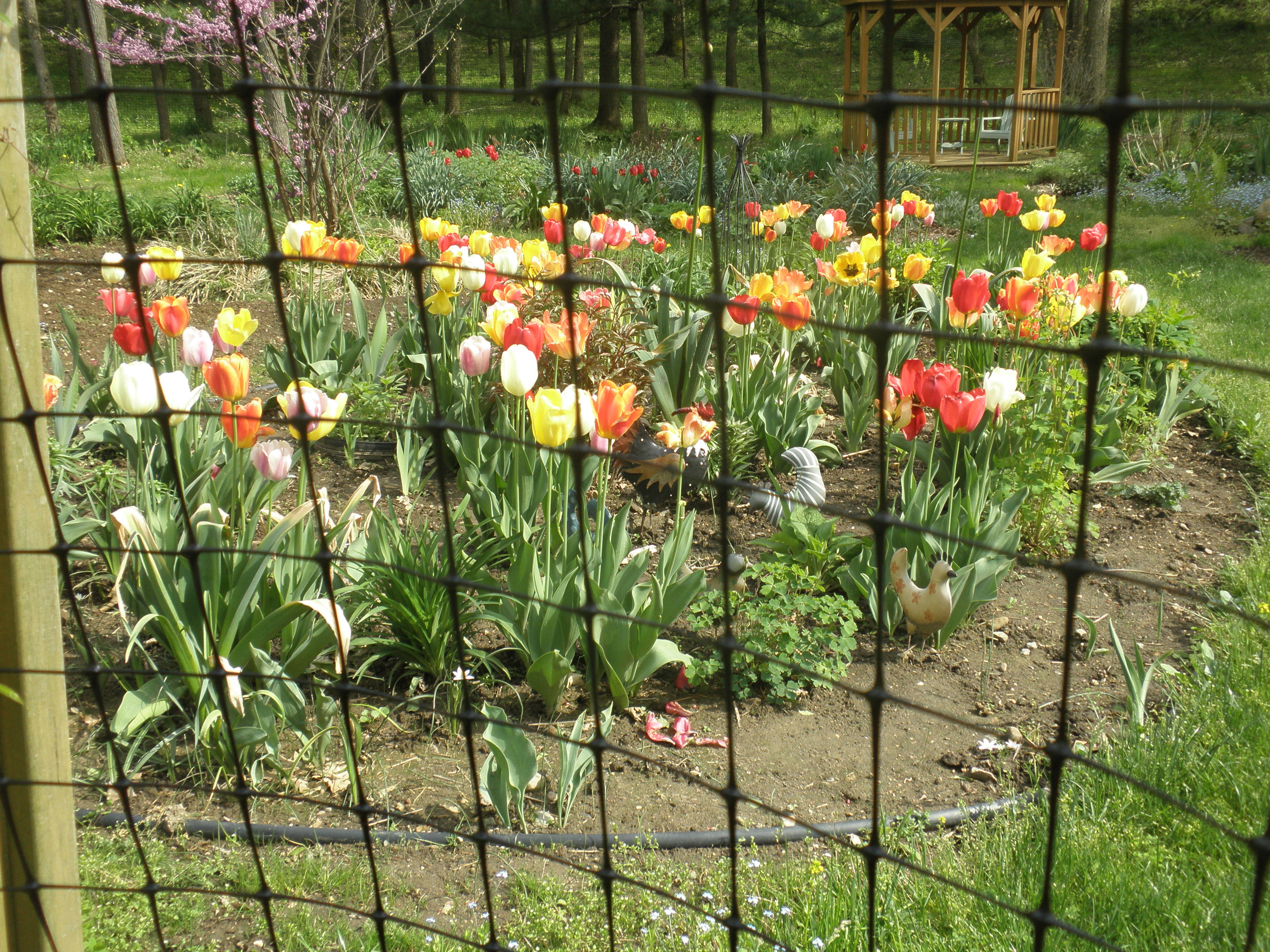 Listen Bambi, you aren't fooling anyone.
Listen Bambi, you aren't fooling anyone.
Those doe eyes make him look so innocent; but as soon as you walk away, Bambi will be feasting on all of your hard work, a.k.a. your organic fruit and vegetable garden. Managing a home garden is more than just a recreational hobby - it's a way of living. Families across the United States choose to eat organic food by planting crops - a sustainable lifestyle choice. Why let it all go to waste because of four-legged deer and elk?
Per the National Center for Biological Information, a division of the National Institute of Health, the use of deer fencing has been proven to reduce the risk of Lyme disease by 83-97% (http://www.ncbi.nlm.nih.gov).
Still not convinced? Here are more reasons why now is the time to invest in Deerbusters deer fencing:
Begin Growing Flowers and Crops Now
As the seasons change from winter to spring, and the weather warms up, deer become more open to investigate yards and gardens. After all, they were hungry throughout the wintertime where resources were scarce; and now white-tailed deer want the best of the best.
In March, gardeners can grow plants such as:
- Beets
- Broccoli
- Cabbage
- Corn
- Cucumbers
- Melons
- Peas
- Onions
- Peppers
- Spinach
- Tomato
Like humans, wildlife animals will not wait to be fed; and they will rummage through backyard gardens if they see something appealing to the eye - and nose.
The majority of crop damage was attributed by these wildlife species:
- White-tailed deer (94% of farmers experienced a loss)
- Wild Hogs (61%)
- Coyotes (33%)
- Raccoons (30%)
- Rabbits (10%)
Deer Damage in the United States

Admittedly, they look adorable; but white-tailed deer are the most destructive wildlife species to strike North America.
Deer damage to U.S. agriculture is reported to result in the loss of $4.5 billion of crops annually.
During 2001, field crop losses from wildlife in the United States totaled $619 million and losses of vegetables, fruits and nuts totaled $146 million. White-tailed deer accounted for 58% of the field crop damage and 33% of vegetable, fruit and nut damage.
On average in Pennsylvania, 67% of farmers report problems with deer and over $1.7 million in agriculture damage was caused by deer alone. In New York, farmers estimated their deer-related crop damages totaled $59 million in 2002. Not to mention the hundreds of millions of dollars in damage to cars - including injuries and fatalities each year. With the over-population of deer, there has been a surge of damage among farms and gardens.
Ticks and Lyme Disease Prevention
In addition to agriculture damage caused by deer, humans are at risk of tick-borne diseases brought by deer, such as #LymeDisease. Lyme Disease is caused by the bacteria Borrelia Burgdorferi which is transmitted to humans and animals through tick bites.
“Although many tick species can transmit Lyme Disease, deer ticks are primary carriers in the United States,” says Mark Dayhoff, wildlife control expert and general manager of Deerbusters.com.
Adult ticks are most active from March to mid-May and from mid-August to November. As deer enter backyards in search of food, deer ticks and Lyme Disease follow – and they do not go dormant – even in the wintertime.
Click here to learn more about ticks and #Lyme.
 Managing home gardens is stressful enough. ("Am I watering my flowers enough? Did I forget to fertilize? Did I forget to feed my plants?") With our protective garden fencing from Deerbusters.com, customers can rest assure that their organic gardens are secure, free from wildlife damage.
Managing home gardens is stressful enough. ("Am I watering my flowers enough? Did I forget to fertilize? Did I forget to feed my plants?") With our protective garden fencing from Deerbusters.com, customers can rest assure that their organic gardens are secure, free from wildlife damage.
Spend time on Deerbusters to find the right poly deer fence or metal deer fence for your lawn and garden; or contact us at 888-422-3337 and we'll provide you with recommendations, free sample packets and price quotes.
